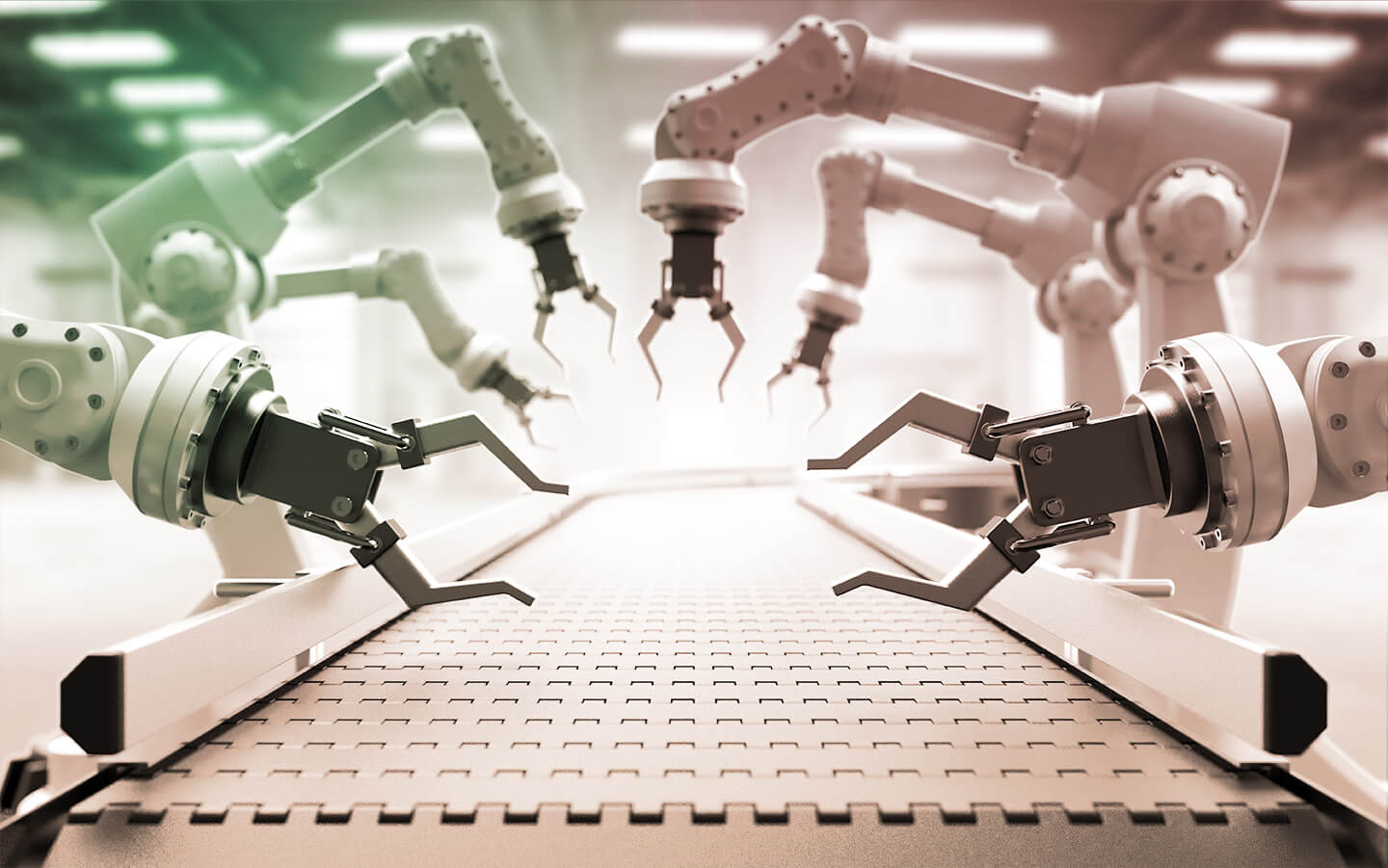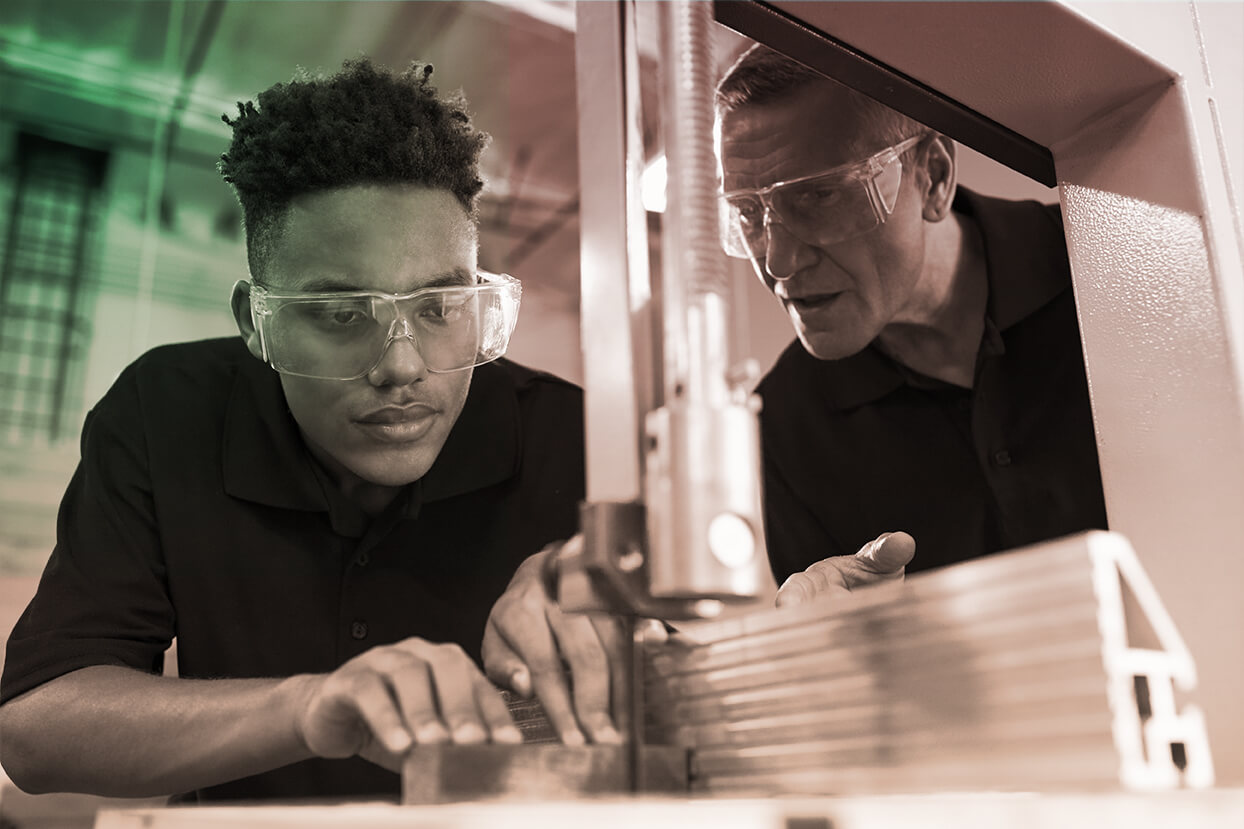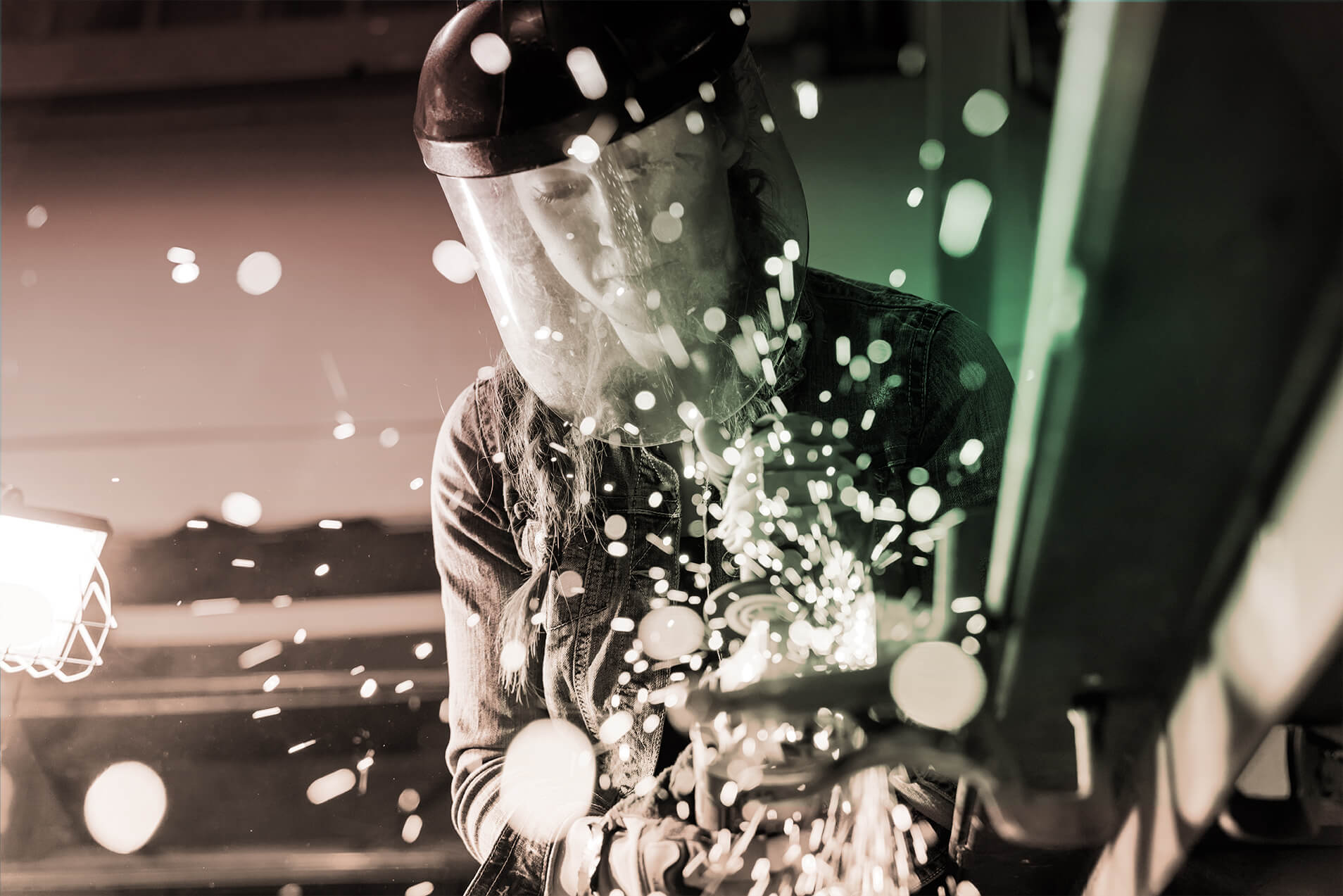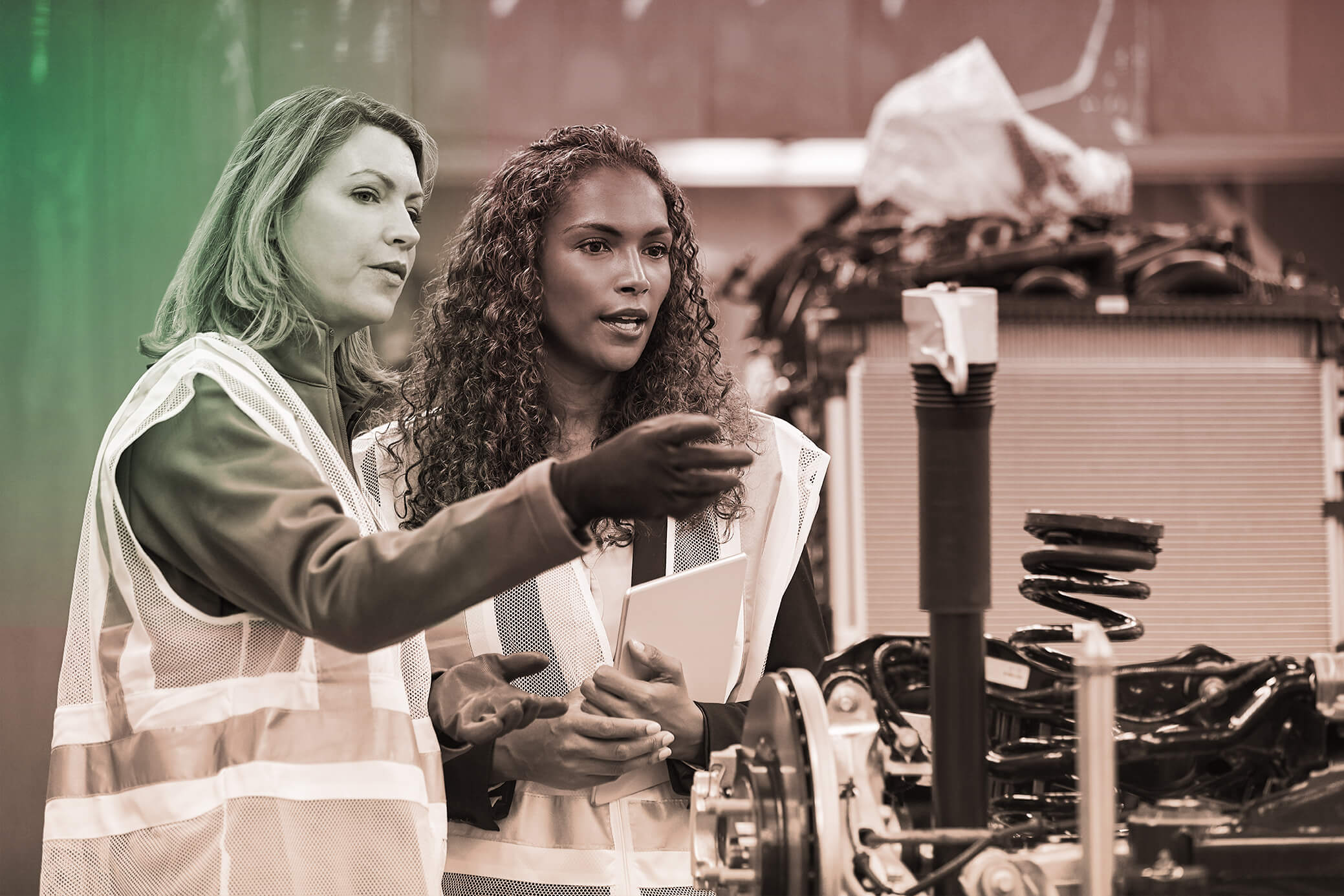Owning the Challenge
C-Suite Companies Perspective on How Companies Can Shape the Future of Industrial Labor



MODERATED BY

JOSEPH GRABOWSKI
SENIOR RESEARCH ASSOCIATEBAIRD
PANELISTS

RICK CARON
EXECUTIVE VICE PRESIDENT AND CHIEF INNOVATION OFFICERWELBILT

AARON JAGDFELD
PRESIDENT AND CHIEF EXECUTIVE OFFICERGENERAC POWER SYSTEMS

CHRIS MAPES
CHAIRMAN, PRESIDENT AND CHIEF EXECUTIVE OFFICERLINCOLN ELECTRIC

VINCENTE REYNAL
CHIEF EXECUTIVE OFFICERGARDNER DENVER
The industrial sector is facing a labor crisis as it copes with various secular and cyclical challenges. How will industrial companies address today's labor challenges, and what will they do to build the next generation of the industry's workforce? This panel discussion explores how a variety of companies are tackling these important questions.
Baird sat down with a panel of global industrial company executives to discuss the future of the industrial workforce amidst widespread labor shortages, a widening skills gap and a dearth of young workers. All agreed that these persistent challenges require innovative solutions.
JOSEPH GRABOWSKI:
HOW IS YOUR BUSINESS ADAPTING TO CURRENT LABOR CONDITIONS? WHAT ROLE DO PROCESS AND TECHNOLOGY IMPROVEMENTS PLAY IN HOW YOU'RE ADDRESSING RELATED CHALLENGES?
CHRIS MAPES:
We're positioning our business with the belief that this is a long-term strategic challenge. That this isn't something that we can develop short-term solutions for which will eliminate the challenge. We believe this is something every manufacturer needs to address aggressively with various types of solutions. It's something we'll be dealing with as an industry for many, many years.
Lincoln Electric has had a very long-tenured history with education. In our headquarters in Cleveland, Ohio, we have the longest continuously running welding school in the world. It started operations in 1917. Over the past several years, we've worked to address and mitigate some of the challenges associated with education and the ongoing development of individuals who can continue to advance our solutions into the global marketplace. We've expanded our investment in education considerably by expanding many in-house initiatives and developing a "earn to learn" type program.
AARON JAGDFELD:
It's a really challenging labor environment, regardless of the roles that you're trying to fill. We're seeing shortages on the professional/technical side, particularly in engineering, as well as shortages on the manufacturing floor. We have some engineering operations in Germany and China that we've really started to expand because the labor pool for engineering talent is larger in those markets compared to the U.S. We have some of the same challenges when it comes to our in-house electronics, software and firmware development and coding teams. Those are difficult positions to recruit, especially in the Midwest. In those cases, we've taken to either outsourcing or hiring outside the U.S.
As far as our shop floor operations, we've really focused on continuous improvement and lean operations. If you're not doing that as a manufacturing organization, you're leaving a lot of money on the table. But when it comes to lean manufacturing, it's not all about saving dollars as much as it is about taking time and labor out of processes. So while using lean techniques to continually optimize our operations is an important step, we've also had to pretty aggressively adjust our compensation structures. We've made significant changes in how we view the standard work day. The traditional eight-hour day doesn't really exist anymore. We've become a lot more flexible with scheduling shifts because it allows us to tap into completely different labor pools.
The skilled trades are suffering from both low unemployment and fewer people choosing trades as a career. This obviously presents a huge problem for us… That effectively puts a constraint on our growth.

VICENTE REYNAL:
We are approaching this issue from a couple angles. We believe in employee engagement and have done a lot of work around this by encouraging our employees to think and act like owners. This is why we awarded all 6,000+ of our employees with equity at the time of our IPO. We've also worked hard to create a highly engaged workforce and a spirit of continuous process improvement across the company. We continue to implement lean manufacturing initiatives across the company to eliminate non-value-added work and drive labor efficiencies.
RICK CARON:
Ten years ago, attracting young talent was a major concern in our industry (manufacturing of foodservice equipment), but that has changed. I think the thing that's drawn younger workers to the industry is the "new" consumer's interest in food, health and mobile devices. They're interested and paying attention. Thus, they like going into a kitchen and understanding how you build process knowledge around running that kitchen. They don't want to flip hamburgers, but they really like to understand exactly what makes that restaurant experience hum. We give our employees tools to excel. We have a lot of automation, which enables our employees to work smarter, not harder.
JOSEPH GRABOWSKI:
WHAT CYCLICAL AND SECULAR CHALLENGES ARE YOUR CUSTOMERS FACING REGARDING TODAY'S LABOR FORCE? WHAT OPPORTUNITIES AND CHALLENGES HAVE THESE ISSUES CREATED FOR YOUR ORGANIZATION?
VICENTE REYNAL:
Our customers are experiencing challenges around accessing skilled labor in key regions and industries. The opportunity this is creating for us is a chance to partner with our customers to help improve their efficiencies. For example, we recently did a lean event with a customer to help optimize their process in the field. This will allow us to be more entrenched with our customers while helping them become less dependent on skilled labor in this difficult environment.
AARON JAGDFELD:
Our channel partners are our dealers, who are typically electrical or HVAC contractors. They're a very large part of how we go to market. One of their biggest challenges right now is hiring new electricians or new plumbers. The skilled trades are suffering from both low unemployment and fewer people choosing trades as a career. This obviously presents a huge problem for us because this is the core of our distribution. Most of our products get installed permanently, so installation requires competent, skilled professionals. That effectively puts a constraint on our growth.
Consequently, we've been very focused on how to make our products differently so they're easier to connect to homes – making changes so it doesn't take two people eight hours to connect a generator to a house. How can we do it in half the time? If we can do that, then ostensibly, even with the current labor pool, we can accomplish twice as much. It's really about improving the bandwidth of what we have already, knowing that we're going to have these constraints. The macro thesis around these constraints isn't really going to change any time soon.
RICK CARON:
From our perspective, what's really interesting is the longer-term secular changes that are unfolding. It's clear we are facing a global labor shortage crisis. The cost of training and retaining employees are two other major challenges. Another big challenge is the rising cost of real estate. A big secular change for our customers is the pressure to get more output – to grow same-store sales in a smaller footprint with fewer employees.
JOSEPH GRABOWSKI:
CAN THE PUBLIC SECTOR HELP ADDRESS THESE CHALLENGES?
CHRIS MAPES:
This is a long-term problem, and as manufacturers, we've got to build solutions in the private sector. That's the way this is going to get resolved. I am passionate about developing skills and the work we do, and I just believe strongly that private-sector manufacturing – large industrial companies like Lincoln Electric and others – have to own this challenge. We need to continue to try to educate and develop the workforce that's going to ensure that manufacturing is a large component of our economy here for decades to come.

This is a long-term problem and as manufacturers, we've got to build solutions in the private sector.

AARON JAGDFELD:
Our education system celebrates college-bound tracks of learning. However, there are a lot of people for whom the right – or better – answer is a technical degree, skilled trade or other path that isn't the traditional college track. In a way, the system overemphasizes college as the only viable path and does not reward students who select another path. I think it's important to get back to supporting alternative career paths.
JOSEPH GRABOWSKI:
THE INDUSTRIAL SPACE HAS BEEN GRAPPLING WITH THE INTERNET OF THINGS (IOT) AND INCREASINGLY POTENT AUTOMATION SOLUTIONS. HOW WILL THESE FACTORS SHAPE THE FUTURE OF INDUSTRIAL LABOR? HOW ARE THEY CHANGING THE WAY YOU OR YOUR CUSTOMERS OPERATE?
CHRIS MAPES:
I think when our customers are confronted by labor constraints, there are two options. The first is identify and train the welder, which we can support through our educational programs. The second option is to automate the process. Automation generally provides an opportunity to increase productivity or quality. Competency is relative to that, depending upon the complexity of the application. It doesn't necessarily mean eliminating headcount. It could be that the welder becomes a technologist or does other process work within the cell. Perhaps they become the robotics expert who is then doing the service work in the manufacturing facility. We really don't advocate automation as a way to eliminate headcount. It's about repurposing headcount into other skills, and we believe it can drive much higher productivity, consistency and quality, especially in complex welding applications.

AARON JAGDFELD:
From an internal perspective, where IoT becomes important is when we link automation – say, a robot – to the movement of the line. That goes beyond just automating operations. It's integrating the manufacturing floor. IoT is also very helpful in predictive analytics. We're constantly monitoring processes and products for predictive failure. Failures generate downtime, and downtime in any manufacturing operation is not good. We use IoT internally to predict those failures before they happen. It's similar on the external side. We use IoT to integrate sensors into our emergency backup generators. It's not enough to simply put sensors into the machines; you need to build a connectivity layer to get the data from the sensors to the people who need it, whether it's the machine operator, our dealer or Generac. However, you need to go a step past building that sensor-person pathway. You need to build logic around the sensor and create algorithms around what the sensors are doing.
As a manufacturer, we're now tackling challenges like building software, writing algorithms, deciding how often to ping a sensor and finally analyzing the data. It's fascinating, and it's a whole different skill set that gives rise to new roles, new opportunities and new challenges.
RICK CARON:
I speak quite a bit around the world on the future of our appliances. What I often say is, if you're buying equipment today, and it doesn't have connectivity, it's going to be a dinosaur tomorrow because in order for the equipment to play in this new world, it needs to respond to some type of kitchen management system. All of the back-of-the-house equipment in a restaurant – that is, the kitchen – has an open loop. It's never been tied into the front of the house with digital technology. With connectivity, it will. It will lead to production schedules that go directly to the equipment so the equipment knows what to do. At the end of the day, the kitchen and the restaurant need a brain, and we call that the kitchen management system. It's basically a production control system for the kitchen, applying what we apply in our factories but to a much smaller enterprise like the kitchen, which is really a small factory in itself.
We absolutely have an industry leadership responsibility to drive education and training around our workforce.
As for automation, I see it being invisible inside the restaurant. Our appliances are already being "born" digital, and we have retrofit devices that can be added to existing appliances. That said, I believe our future fryers and grills will have material handling that automatically moves product through the appliance. But to do that, the packaging needs to change. Automation is leading to more clever design where packaging and feeding of the food product occurs naturally into the appliances themselves. Consequently, our business is getting more tied into the packaging supply chain. That packaging also needs to be recyclable and good for the environment.
JOSEPH GRABOWSKI:
HOW ARE YOUR COMPANIES WORKING TO MAKE EQUIPMENT MORE USER-FRIENDLY AND QUICKER TO TRAIN?
CHRIS MAPES:
This is an element of how we think about our next generation of products and welding technologies we'll bring to the marketplace. We need to make welding cutting solutions simpler and need to make processes easier for both the welder and fabricator. It's important to make it easier for today's welder, knowing they might not have the level of skills as welders in previous generations. For the welder, we need to make sure that the user interfaces make key competencies and performance information very accessible. We need to make it a one-touch setup for any particular application. Let's make it easier for the welder, recognizing that the welder might not have the level of skills that the generational welder before had. We also want to make it easier for the fabricator. A fabricator may have multiple welders within their business, so that's where we want to set up systems and solutions to better enable them to measure and enhance the welding processes.
Of course, training also makes a difference here. We've made a huge investment in training to educate welders and bring them up to speed as quickly as possible. Our VRTEX Training Solution is a virtual reality trainer, which you can find in a multitude of countries and educational institutions not only in the United States but around the world. We've also placed those units inside a large semitrailer that travels the U.S. in the summer, going to state fairs and the National FFA Show and other events to expose people to welding.
RICK CARON:
People no longer read the owner's manual to operate equipment. Forget all that. It has to be as easy to use as an iPhone, particularly for younger workers. They have to be able to literally turn the equipment on, and it needs to be intuitive on what to do next. The second piece is a bigger user interface. People sometimes think the user interface is just the screen. It's not – it's the whole appliance.
It's really about getting the information to people using the machine in a very intuitive way. It's tied to when they need the information as they do their job. You test to that when you're developing and launching the equipment. Now that we're getting systems of equipment together, we're also working to ensure the styling and the physical appearance of the equipment comes across as one family across our complete product line.

JOSEPH GRABOWSKI:
HOW ARE YOUR COMPANIES ADAPTING THEIR APPROACH TO ATTRACTING, TRAINING AND RETAINING YOUNGER TALENT?
RICK CARON:
We're lucky that young workers have returned to our industry over the past few years. In addition to giving them technology and tools to excel in their jobs, they enjoy working for brands they know. The customers/brands we interact with are truly global, and they're everywhere. It's a connection point for employees to come into the world of those brands by working inside a Welbilt factory making equipment for those brands.
VICENTE REYNAL:
We're finding success in attracting younger generations, at all levels and functions through a concerted effort around engagement and talent development. We like to best describe our culture as one where Gardner Denver is a 160-year-old startup. We have a very entrepreneurial spirit and focus on agility and fast decision-making. We also have a highly connected workforce. Today, approximately 30% of our employees are millennials, and our engagement scores on this segment of the employee base are higher than the total company average. We have a few programs we're using to target younger generations of workers, like a high-potential program, a "pay for performance" initiative, with equity at more junior positions, and new initiatives that pull in cross-functional talent from all levels of the organization to solve business challenges.
In a way, industrial manufacturers have created our own problem… How do we fix it? It's not an easy answer.

CHRIS MAPES:
We need to underscore why manufacturing is a great place to have a career. Manufacturing comprises a little over 12 million workers in the United States. That's about 8.5% of the national workforce. The National Association of Manufacturers reports that in 2017 that average wage was more than $84,000 a year. That is a very sustainable livelihood, and we think manufacturing provides that. We absolutely have an industry leadership responsibility to drive education and training around our workforce. I also believe we have an obligation in our local communities to be a manufacturer who's willing to work to expose individuals to the value of manufacturing and welding. Lincoln Electric does that through a host of various programs.
One simple example is in 2012, we worked with the American Welding Society to develop a welding merit badge for the Boy Scouts. Exposing kids to welding is one of the steps. We also have partnerships and programs that expose high school, early college and early career individuals to our company and our industry. It all helps to expand the visibility and scope of both manufacturing and Lincoln Electric to people who might not recognize that it can be a great career path. We're also proud to support organizations like Skills USA and World Skills, which provide programming for young adults to be active in trades.
AARON JAGDFELD:
In a way, industrial manufacturers have created our own problem. As an industry, we've failed to groom the next generation of potential employees for our operations. As an industry, over the last 10 years we've woken up to the fact that this is going to be a major problem. How do we fix it? It's not an easy answer. There's not a single silver bullet. It's so important to work on programs to introduce kids to manufacturing at an earlier age. We need to reach them when they're in high school or even earlier to encourage them to get interested in the STEM subjects, robotics and automation. We need kids to be interested in those disciplines so we've got a viable workforce for the long term.
We also want to make a difference in addressing the issue of providing alternative career paths for students who need or want one. We have a partnership with an organization called GPS Education Partners. It's something we started almost 20 years ago for credit-deficient high school students who otherwise may not graduate. We identify students and offer them the opportunity to learn in a classroom setting, in our plant, and also work on the shop floor. It's kind of a hybrid job, where they work for the company but also attend school for several hours a day. They build up credits to get back to basically an equivalency degree, and they actually get to graduate with their class. It's an accredited program, and there are actual teachers on site at these businesses that enroll in the GPS program.
That's just one program, and it's going to take a lot of programs like that to turn the tide on this labor trend. The world is changing incredibly fast, and the talent that we need and that's needed by manufacturers in the U.S. has to change with it. We've got to get back to basics and bolster technical training and technical education. We need to continue to create innovative programs and have to explore new ways of finding people to recruit to our workforce.

The world is changing incredibly fast, and the talent that we need and that's needed by manufacturers in the U.S. has to change with it.






